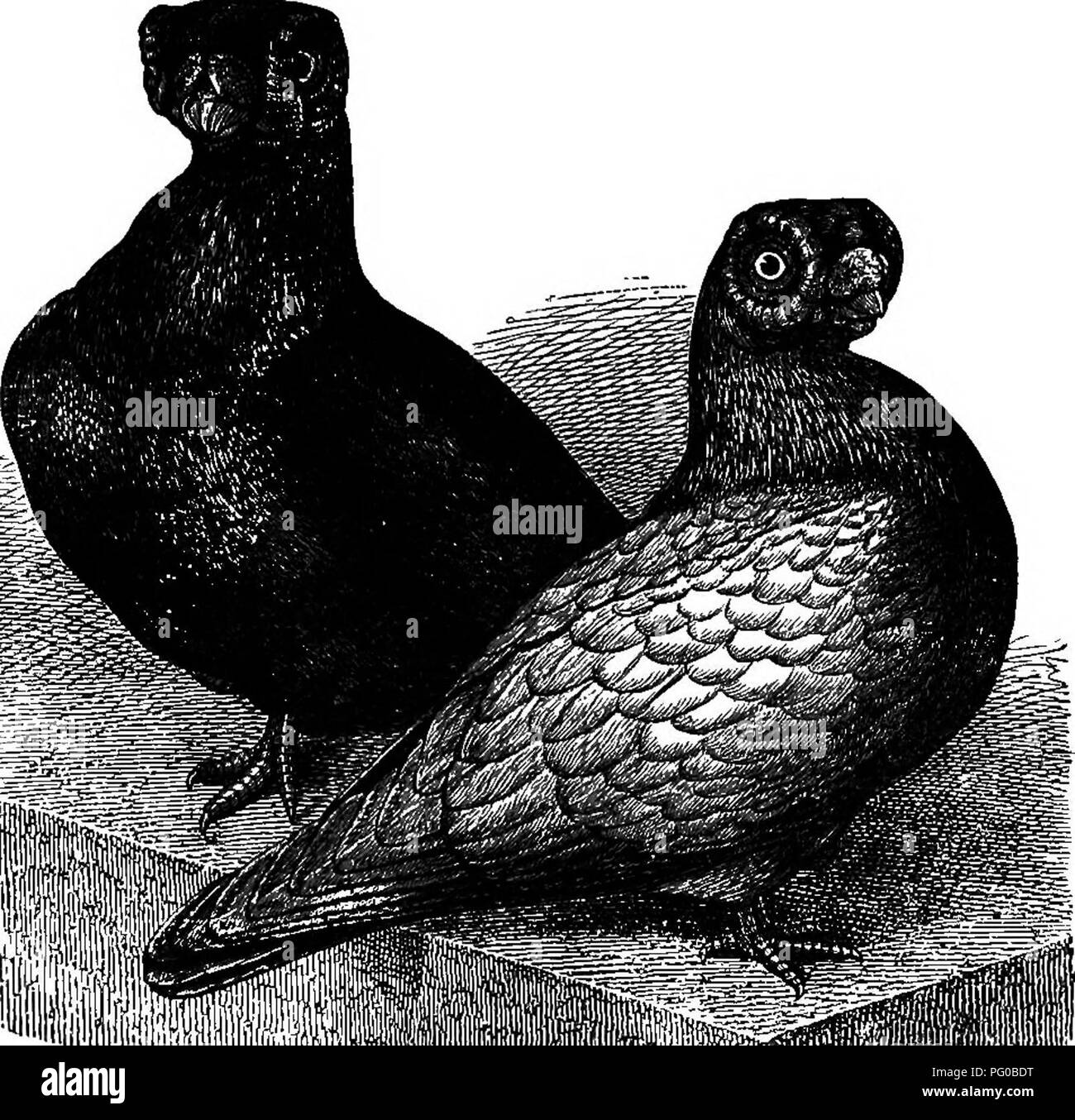. The practical pigeon keeper. Pigeons. 98 THE PRACTICAL PIGEON KEEPER. the experiment of crossing Barbs with Carriers, in the hope of improving this point; but the model of the two birds is so totally different that no good has ever been traced to such a cross. It has been forgotten that not only is a Carrier. rf„';''r head narrow, but the type of the eye-wattle is tJiin; whilst we want in a Barb to encourage width, as much as possible, in both wattle and skull. This is, no doubt, one of the most ancient varieties of pigeons. Shakespeare alludes m. As You Like It (Act iv., Scene 2) to a "

Image details
Contributor:
Central Historic Books / Alamy Stock PhotoImage ID:
PG0BDTFile size:
7.1 MB (548.6 KB Compressed download)Releases:
Model - no | Property - noDo I need a release?Dimensions:
1603 x 1559 px | 27.1 x 26.4 cm | 10.7 x 10.4 inches | 150dpiMore information:
This image is a public domain image, which means either that copyright has expired in the image or the copyright holder has waived their copyright. Alamy charges you a fee for access to the high resolution copy of the image.
This image could have imperfections as it’s either historical or reportage.
. The practical pigeon keeper. Pigeons. 98 THE PRACTICAL PIGEON KEEPER. the experiment of crossing Barbs with Carriers, in the hope of improving this point; but the model of the two birds is so totally different that no good has ever been traced to such a cross. It has been forgotten that not only is a Carrier. rf„';''r head narrow, but the type of the eye-wattle is tJiin; whilst we want in a Barb to encourage width, as much as possible, in both wattle and skull. This is, no doubt, one of the most ancient varieties of pigeons. Shakespeare alludes m. As You Like It (Act iv., Scene 2) to a "Barbary" pigeon, which there is not the slightest doubt is the same as that before us; and it seems likely that Moore. Please note that these images are extracted from scanned page images that may have been digitally enhanced for readability - coloration and appearance of these illustrations may not perfectly resemble the original work.. Wright, Lewis, 1838-1905. London, Cassell & Company